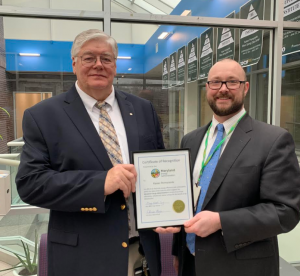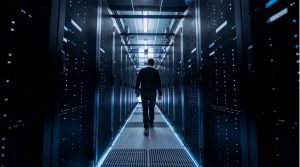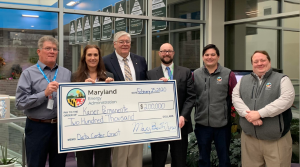Kaiser Permanente Upgrades Silver Spring Data Center to Realize $360K in Annual Savings
Maryland Energy Administration (MEA) Data Center Energy Efficiency Program (DCEEP) improves the energy efficiency of data centers, attracts and retains business to the State and builds public/private relationships. Maryland was the first state in the nation to offer a program to address the specific needs of data centers in 2016. This program was a finalist for a global industry innovation award just two years ago and competed alongside companies like Apple, Huawei and Microsoft.
“This program fully supports Maryland businesses by recognizing and investing in the information technology sector,” said Mary Beth Tung, Maryland Energy Administration Director. “Data centers are modern economic drivers and are creating high-paying jobs. However, data centers are also major energy users. By partnering with and investing in data centers, Maryland can help reduce energy usage, improve competitiveness, and drive innovation.”
Many people do not know that data centers use an enormous amount of energy. In fact, data centers consume 100 to 200 times the amount electricity used by a standard office. Today, data centers consume about 2% of electricity worldwide; and recent studies predict an 8% rise by 2030. This is precisely why Maryland’s Data Center Energy Efficiency Grant is crucial in maintaining and growing this vital industry.

MEA Chief of Staff Chris Rice (right) presents Richard A. Zbin Director IT Operations, Infrastructure Platforms & Services, Data Center Operations of Kaiser Permanente with a certificate in recognition of energy savings and commitment to sustainability.
Kaiser Permanente received a DCEEP grant of $200,000 to complete energy efficiency actions in its regional data center in Silver Spring. Energy upgrades include replacing constant speed fans with variable speed fans in its computer room air conditioning units, updating the controls to more energy efficient models and modes, and monitoring for opportunities to save energy and reduce costs. The fans are used to maintain cool temperatures in the rooms where computers and other equipment stores critical data. The total grant funding was for $200,000 and is estimated to save over 3 million kilowatt hours (kWh) which is enough energy to power 250 Maryland homes for an entire year. The annual energy cost savings of this upgrades was more than $360,000 back to Kaiser Permanente. The energy cost savings for this project were verified by an outside contractor.
In the photo above, from the left, Kaiser Permanente staff members: Steve Press, VP IT Operations, Data Center Operations, Elizabeth Burneko Executive Director IT Operations, Infrastructure Platforms & Services, Data Center Operations, Richard A. Zbin Director IT Operations, Infrastructure Platforms & Services, Data Center Operations, MEA staff: Chris Rice, Chief of Staff, David Giusti, Energy Program Manager and Eric Coffman, Programs Director.
“Environmental factors are inextricably linked to human health. Our work to protect against climate change is embedded in our operations, from how we manage our buildings, to how we purchase food and medical supplies, to how we deliver health care to our members,” said Kathy Gerwig, vice president of employee safety, health and wellness, and environmental stewardship at Kaiser Permanente. “We’re proud to reduce our environmental impact further by introducing energy efficiencies into our IT operations in the mid-Atlantic area.”
Kaiser Permanente is committed to minimizing its environmental impact and has taken a number of steps to become carbon neutral in 2020, including prioritizing renewable energy projects to generate its own power, sourcing environmentally sound products, and incorporating energy-efficient measures at its facilities. Its policies have enabled Kaiser Permanente to reduce its greenhouse gas emissions by nearly 30% in the last decade and reduce water usage by 15% per square foot of building space.
To learn more about Maryland’s DCEEP visit the program web page. Look for information about the next cycle of this program to be announced after July 1. 2020.



 1-888-373-7888
1-888-373-7888 233733
233733